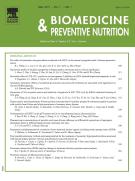Involvement of the NO/cGMP/PKG/KATP pathway and endogenous opioids in the antinociceptive effect of a sulphated-polysaccharide fraction extracted from the red algae, Gracilaria caudata - 09/11/12

Abstract |
We investigated the antinociceptive activity of a sulphated-polysaccharide (PLS) fraction extracted from the sea algae Gracilaria caudata against carrageenan-induced hypernociception in mice and the mechanism underlying the antinociceptive activity. Mechanical inflammatory hypernociception was measured with an electronic version of the Von Frey® test. Mice were treated with PLS (2.5, 5.0, and 10 mg/kg, 0.5mL, p.o.) 1h before carrageenan treatment. l-Noarg (100ng/paw; 50μL) was administered 1h before carrageenan administration. l-Arg (l-Arginine; 200 mg/kg; 0.5mL, p.o.) was administered 10min before l-Noarg injection. ODQ (8μg/paw), KT 5823 (1.5μg/paw), glibenclamide (160μg/paw), and naloxone (1.0μg/paw) were administered 30min before carrageenan administration. PLS reduced carrageenan-induced hypernociception (300μg/paw, 50μL, intraplantar injection). PLS-induced analgesia was reversed by l-Noarg, and the effect of l-Noarg was prevented by l-Arg. The soluble guanylyl cyclase inhibitor ODQ, the protein kinase G inhibitor KT 5823, the KATP blocker glibenclamide, and the opioid receptor antagonist naloxone, significantly reversed (P<0.05) the antinociceptive effect of PLS. The present study showed an intrinsic peripheral antinociceptive action of PLS administration in mice. This antinociceptive effect seemed to be mediated by activation of the NO/cGMP/PKG pathway followed by the opening of KATP channels, and depended on endogenous opioids.
Le texte complet de cet article est disponible en PDF.Keywords : Sulfated-polysaccharide, Hypernociception, Oxide nitric, Opioids
Plan
Vol 2 - N° 4
P. 303-309 - octobre 2012 Retour au numéroBienvenue sur EM-consulte, la référence des professionnels de santé.
L’accès au texte intégral de cet article nécessite un abonnement.
Déjà abonné à cette revue ?

